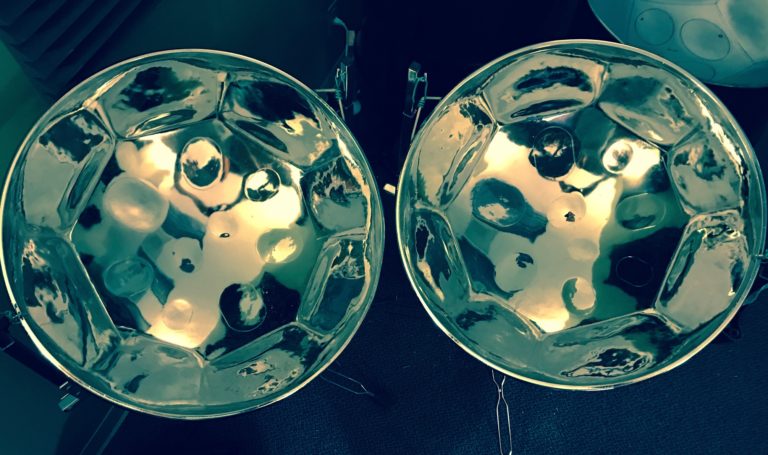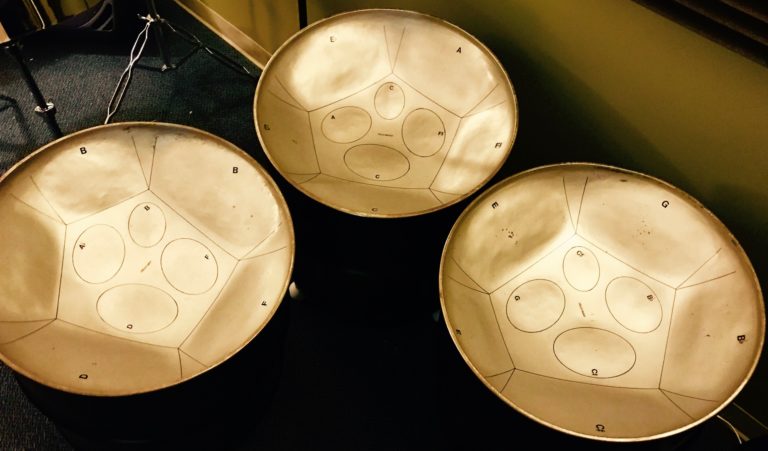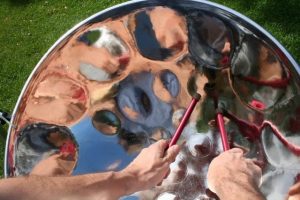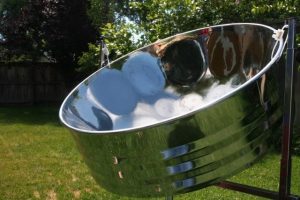For Better or Worse: Standardizing Pan
Who’s version of a double guitar pan pattern is most common? If you master the double seconds in high school and seek to play pan in college, will the notes in the pan be even close to the same on their pans? How should I prepare for travel to Trinidad to play in a band for Panorama if I don’t know what pattern of double tenors they will have? These are all legitimate questions that we have as pan players, and they all lend themselves to the issue of standardizing the note layouts of the instruments in the steel orchestra.
The steel pan is still in its infancy compared to other acoustic instruments. Its discovery and development began only ~70 years ago. Because the instrument is still so young, arguments have been made that the best note patterns for ease of playing and quality of sound have yet to be discovered. However, the popularity of the art form and the music being written for the instrument is growing exponentially. Does this mean that it is time to decide on a standard note pattern for each of the different pan voices? This continues to be a dispute among pan players, builders, and tuners because of the countless hours they have devoted to mastering their way of doing it.

EDUCATION
Viewing pan through the lens of an educator allows us to see the pedagogical benefits of note standardization. It’s no secret that it takes many hours to become proficient on a musical instrument. Musicians learn the intricate movements idiomatic to their instrument as they develop fluency through scales, exercises, and repertoire. This progress is essential for cultivating musicianship, both individually and in an ensemble. It is unrealistic to expect much in the form dynamics, tempo, phrasing, and other musical concepts until a student has achieved a level of comfort with where the notes on a pan are located. Giving students the best chance to succeed means preparing them for what they will experience next on their musical path. Maximizing this potential is not possible in pan education without comparable pedagogical concepts through the means of similar pan layouts.
Composers and arrangers of steel pan music also take into account note layouts of pans to allow performers to play with as much ease and accuracy as possible. While this is not the end-all be-all of making decisions when composing for pan, it is a beneficial consideration for how fluid the music will sound, especially in small group and soloistic settings. As pan continues to gain momentum in public school and higher education settings, we will continue to see a wealth of instruction materials being released, including method books, etudes, and idiomatic pieces. The purpose of these materials is to aid the learner in acquiring specific skills and techniques for more proficient playing. This function is lost, to a certain extent, when applied to different versions of the instrument not taken into consideration during their creation.

HOUSE PANS
During my years as a pan player and educator, I have played many roles in the planning and execution of clinics, competitions, and performance-based festivals. The biggest headache during these events has always been organizing the movement and use of instruments. I believe participation in these events has been limited to groups who are in close proximity to the venue and those that have the means of transporting their own instruments. Any of us who have had to schlep large bands of pans know that this can be very expensive and a logistical nightmare that has been know to cause flashbacks and PTSD in the following months and years. I believe involvement in educational and performance events would increase greatly if participating groups could use a set of “house pans.” Not only would this concept allow for more consistent adjudication, it would also support the growth of pan programs who don’t currently have access to quality instruction. This would be extraordinary for the cultivation of the pan art form and community across the world.
While my focus here has outlined the positives we would experience from standard instruments, we can’t forget that pan wouldn’t be where it is today without the continuous experimentation and revision of building and tuning practices. The pioneers of the instrument were very creative in developing what has become a serious art form for us to study and enjoy. I believe that pan is still in its youth, and much has yet to be discovered to continue its development.
What are your thoughts on how standardizing pan could help or hinder the art form? Leave some comments below.
Best,
Andrew Neldon



